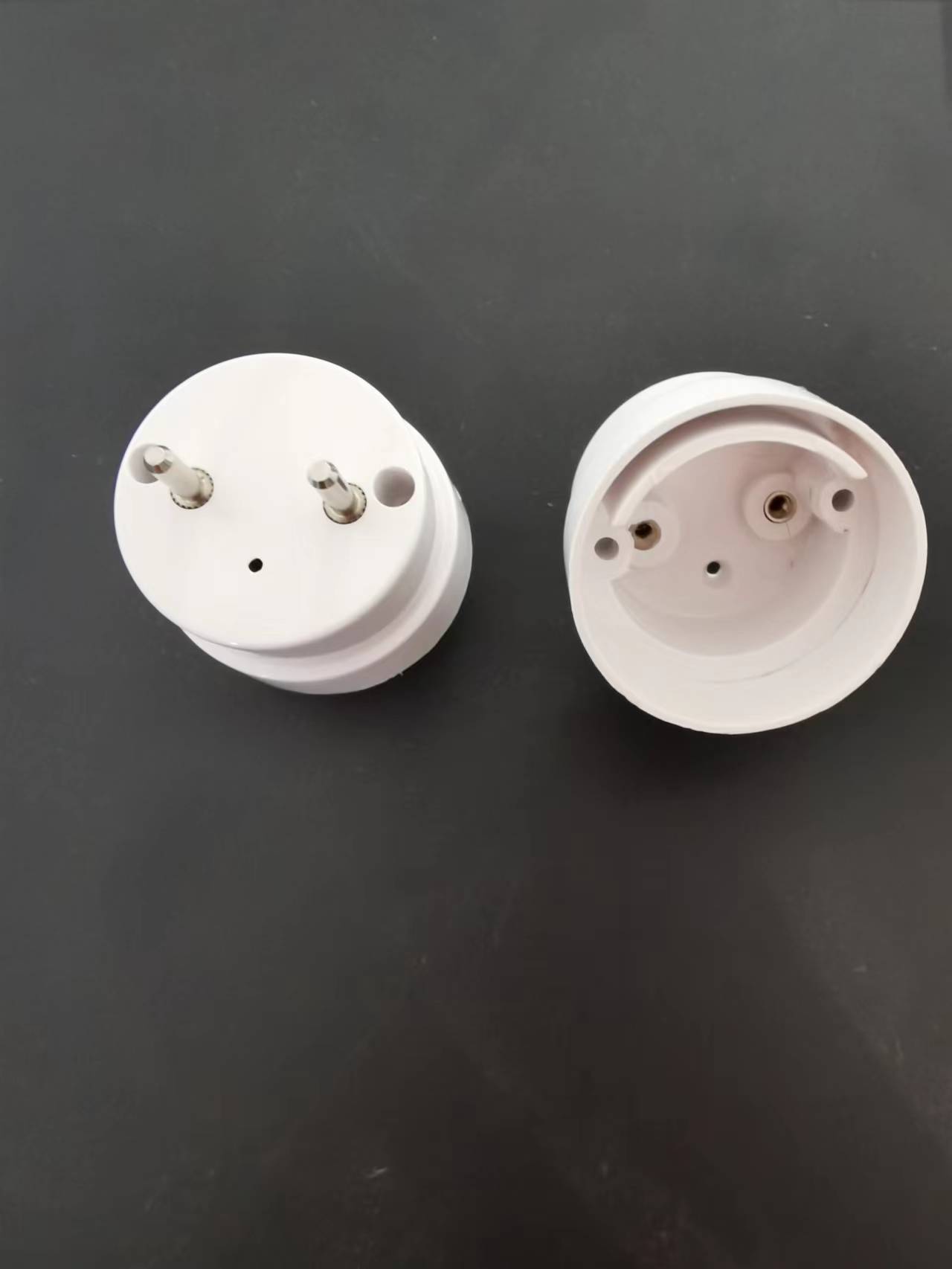- English
- Español
- Português
- русский
- Français
- 日本語
- Deutsch
- tiếng Việt
- Italiano
- Nederlands
- ภาษาไทย
- Polski
- 한국어
- Svenska
- magyar
- Malay
- বাংলা ভাষার
- Dansk
- Suomi
- हिन्दी
- Pilipino
- Türkçe
- Gaeilge
- العربية
- Indonesia
- Norsk
- تمل
- český
- ελληνικά
- український
- Javanese
- فارسی
- தமிழ்
- తెలుగు
- नेपाली
- Burmese
- български
- ລາວ
- Latine
- Қазақша
- Euskal
- Azərbaycan
- Slovenský jazyk
- Македонски
- Lietuvos
- Eesti Keel
- Română
- Slovenski
- मराठी
- Srpski језик
Key Features and Importance of LED T8 Double-ended G13 end caps

Today we talk about the Key Features and Importance of LED T8 Double-ended G13 end caps.
1. Internal Connections Are Crucial:
Non-through Connections: Unlike the metal tabs inside traditional fluorescent lamp end caps that are simply connected directly to the filament, the internal connections of the G13 end caps of LED lamps are part of the circuit.
Shunters/Current-Limiting Resistors: This is the core difference! In order to be compatible with old lamps that have not been modified and still have traditional inductive ballasts (or electronic ballasts) installed inside, most "compatible" double-ended LED T8 lamps will install a key electronic component - a shunt or current-limiting resistor inside the end cap at one end (sometimes both ends).
Function: When the lamp is inserted into a lamp with a traditional ballast, the shunt/resistor will "cheat" or bypass the inductive reactance or high-voltage pulses generated by the ballast, preventing the high voltage from damaging the driver circuit inside the LED lamp. At the same time, it allows the AC mains to enter the LED driver power supply inside the lamp after current limiting.
Location: Usually located inside the end cap at one end (the two pins inside this end are short-circuited and connected to the internal drive circuit through the shunt/resistor). Inside the end cap at the other end, the two pins are directly connected to the input of the drive circuit (L and N).
Marking: The end of the end cap with the shunt/resistor is usually marked (such as labeling, engraving, color differentiation or slightly different structure) to indicate that this is the "ballast end" or "Bypass" end. When installing, this end must be inserted into the lamp holder on the side of the lamp connected to the ballast!
Shunt-free type (for retrofit lamps): If the ballast has been removed from the lamp (jumper directly connected to the mains L/N), LED T8 lamps without shunts can be used. The end cap structure at both ends of this lamp is usually symmetrical, and the internal connection is simpler (short-circuited L/N on one end? Short-circuited on the other end? This depends on the specific design, but no shunt is required). Please read the instructions carefully when purchasing.
2. Structural design and materials:
High-voltage insulation requirements: Due to direct access to the mains (220V), the insulation performance requirements of the G13 end cap of the LED lamp tube are extremely high. It is usually made of flame-retardant, high-temperature resistant high-quality plastics (such as PC, PBT).
Internal wire connection: There are wires inside the end cap to connect the metal contacts of the pins to the PCB board or driver module inside the lamp tube. The quality and welding reliability of these wires are very important.
Heat dissipation considerations: The shunt/resistor generates heat when working, and the end cap design sometimes considers a certain amount of heat dissipation (although the main heat dissipation depends on the aluminum substrate of the lamp tube).
3. Summary of importance:
Safety barrier: It is the first physical insulation barrier to prevent users from electric shock.
Critical nodes of the circuit: It is the key link of mains access and (for compatible types) ballast bypass.
Compatibility realization: The internal shunt/resistor is the core component to achieve "end cap and play" compatibility with old fluorescent lamps.
Installation instructions: The marked end cap guides users to install correctly (shunt termination ballast side).
JE is a factory specializing in the production of IP20/IP65 LED tube housing, for more tube housings, please refer to:
https://www.jeledprofile.com/led-tube-housing
For more details, please contact: sales@jeledprofile.com
Tel/Whatsapp/Wechat: 0086 13427851163



